The U.S. conception of air superiority 20 years after the introduction of the F-14 Tomcat and F-15 Eagle fighters
Reis Friede
Twenty years (in 1994) after the introduction of the F-14 Tomcat and the F-15 Eagle into the inventories of the US Navy and the US Air Force (USAF) respectively, it is important to make a quick assessment, not only of what this new basic concept, incorporated in effective terms in the 1970s, represented for the United States, but also of the American conception of air superiority today.
In the immediate post-World War II era, and particularly in the 1950s, the U.S. primarily possessed two different acceptations of fighter aircraft: fighter-interceptors (F-101 VooDoo, F-102 Delta Dagger F-104 Starfighter and F-106 Delta Dart) and fighter-bombers (F-100 Supersabre and F-105 Thunderchief).
The first category featured aircraft defending America’s continental airspace (CONUS) against Soviet bombers and, exceptionally, a standard outfit (F-104), operational at the time in NATO countries and Japan, of greater versatility with additional combat capability against other tactical fighters.
In the second, in turn, there were the interdiction aircraft, with limited maneuverability and air-to-air combat capability (see the reasonable number of Thunderchiefs shot down by MiGs of various models in the skies over Vietnam).
Until then, the Air Force and the Navy did not have a true aircraft that could be (correctly) classified in the “open” category of fighters and which was consequently provided with multiple dogfighting and ground attack capabilities.
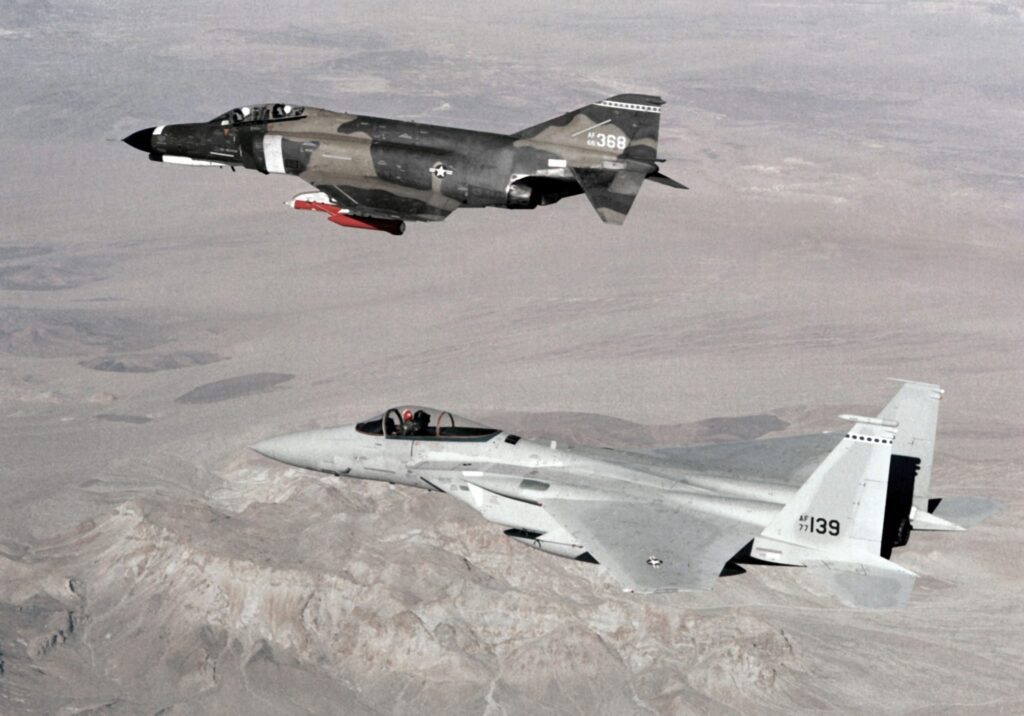
The F-4 Phantom II naval fighter, introduced in the early 1960s, was therefore the most appropriate response to this void in the US air force. The airplane, essentially a biplace fighter of large size and high performance (Mach 2.2, high altitude and more than 7 tons and reasonable maneuverability), was an undeniable success, including in actions in Vietnam, so much so that the USAF and later the Marines soon became interested and acquired the model, of which more than 5,500 were manufactured in various versions (including the RF-4 tactical reconnaissance) for numerous allied air forces.
The emergence of the MiG-25 Foxbat, – originally developed to counter the fantastic XB-70 Valkyrie bomber (designed in the late 1960s as a successor to the B-52, wedge-shaped, with high-speed maneuverability and the ability to reach Mach 3.0 at altitudes over 25,000 meters, with six 14. 060kg thrust, a total weight of 238 tons, a range of 12,000km and impressive dimensions: 56m long, 32m wingspan and 9m high, besides folding wings in flight) – first presented in 1968 at the Moscow show, and the first contact of its reconnaissance version, based in Syria, with an Israeli F-4 at 18. However, the first contact of its Syria-based reconnaissance version with an Israeli F-4 at an altitude of 18,000m and speed of Mach 2.8 (i.e. above the Phantom’s interception possibilities), demonstrated the urgent need for a new high performance aircraft which, unlike the YF-12 (whose prototypes were delivered to NASA) and YF-108 (which was not built in 1968/69), could successfully perform the basic missions of a genuine fighter jet, like the F-4 Phantom II itself.
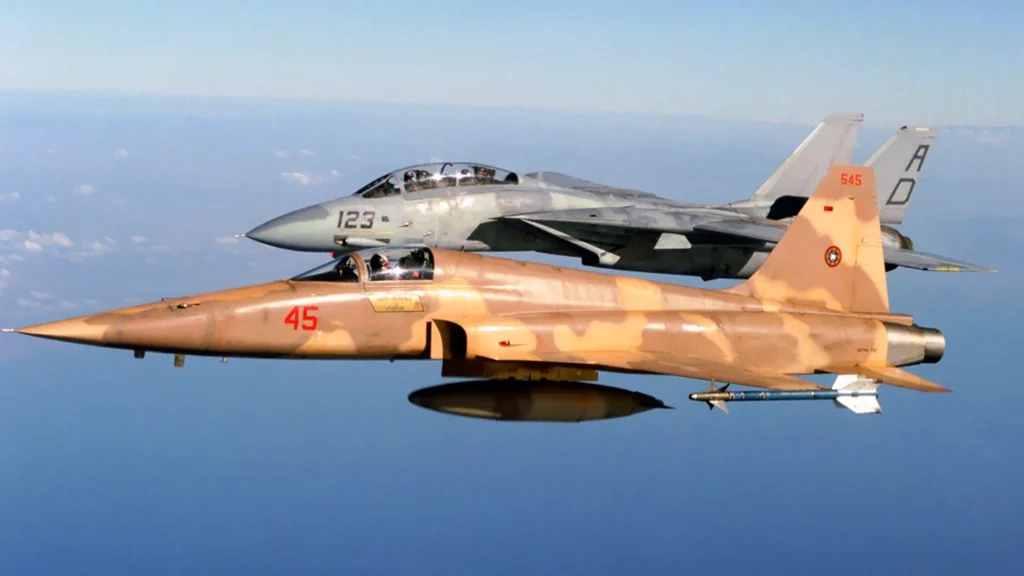
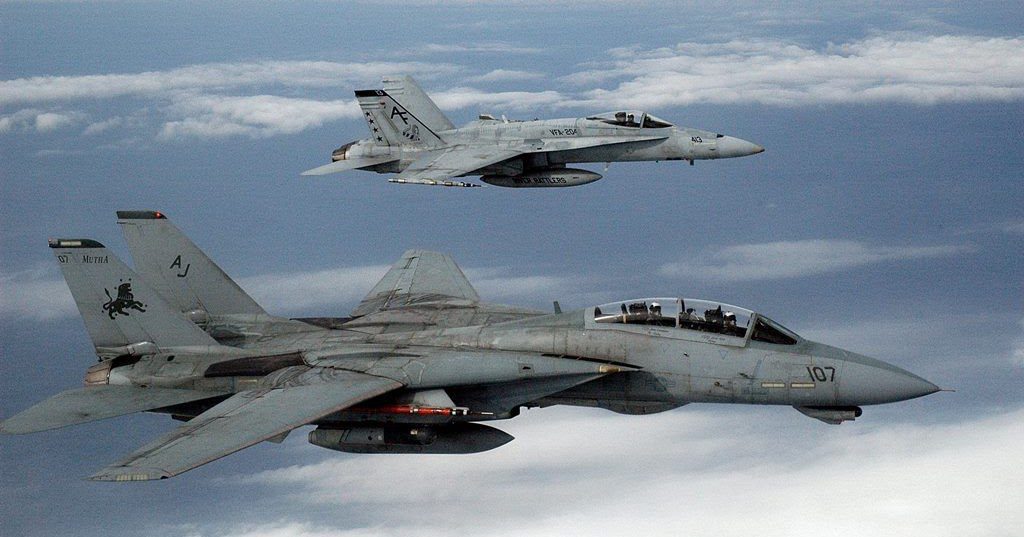
In 1969, two basic designs were defined: the McDomell Douglas F-15 Eagle (Mach 2.5) and the Grumman F-14 Tomcat (Mach 2.34) with variable wing geometry, based on the experience accumulated with the General Dynamics Grumman F-111 (Mach 2.5) fighter-bomber.
Despite the better performance of the Douglas-developed F-15 (thrust-to-weight ratio 1:1) (winner of the competition that took place in the late 1960s and early 1970s), the F-14 (thrust-to-weight ratio 1:0 and speed of Mach 2. 34), equipped with AIM-54 Phoenix missiles (originally developed for an interceptor version of the F-111), proved able to nearly match the combat performance levels of its opponent, causing the Navy (pressured also by considerations of possible bankruptcy of Grumman Aerospace with the possible cancellation of the project, which also led to the mistaken decision to sell 80 complete F-14s to Iran) opted, later, for the initial purchase of a little more than 390 Tomcats after the purchase of 729 units of the F-15 by the USAF.
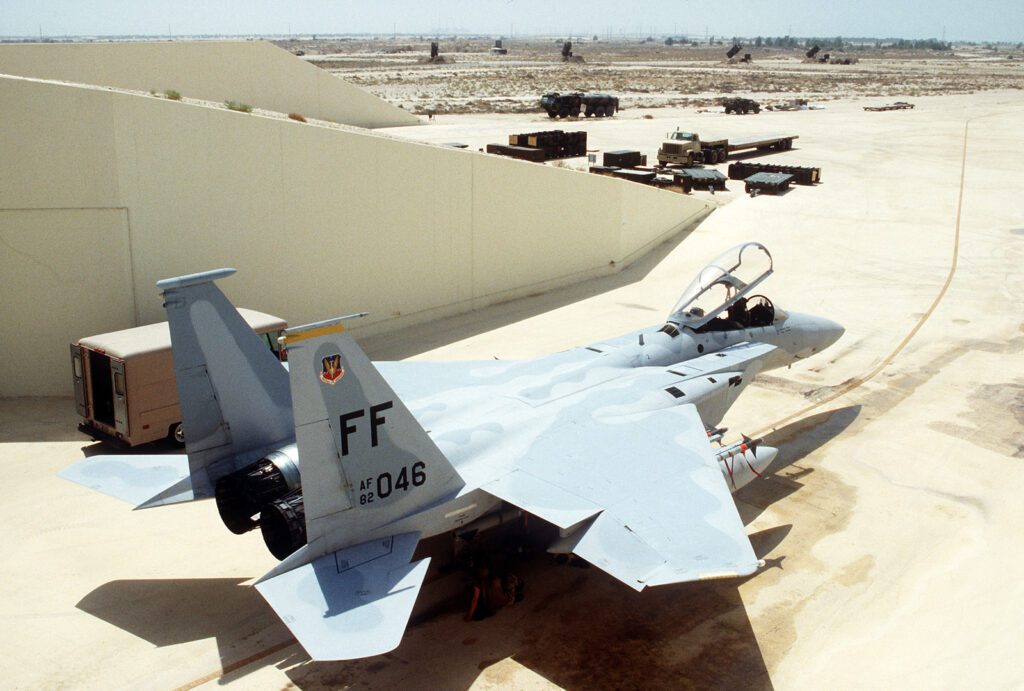
At the official presentation of the F-15 Eagle, on June 26, 1972, the aircraft, with numerous innovations, such as movable air intakes on its two PW F-100 turbofan engines (the same used on the single-engine F-16 Falcon), an aerodynamic brake in the center of the fuselage that allows it greater maneuverability in flight (the F-15, although more than twice the size of the F-5E Tiger II, until then the most maneuverable aircraft of the U.S. Air Force, is even more agile, having shown in early tests to be able to chase this small fighter in any pre-set condition), an ample combination of armament (in basic terms: 4 AIM-7 Sparrow medium-range air-to-air missiles, 4 AlM-9 Sidewinder short-range missiles, and a 20mm Vulcan cannon), has ultimately simply shown a new concept of air superiority, founded on qualitative high-tech (as opposed to deployed quantities) superior (albeit at extremely high cost), and a revolutionary air force employment concept.
Since its entry into pre-operational service on November 14, 1974 (and full active service in 1976), the F-15 (with a war capacity of 7.2 tons) has not only recovered several world records held by the MiG-25 (except that of maximum speed, set in 1976 by the SR-71 Blackbird of the SAC/USAF) and some, eventually still held by the F-4 Phantom II, but also established together with its naval partner the F-14 (with a war capacity of 6. 8 tons) two decades of absolute aerial primacy that was not even threatened by the new generation of fighters of the former Soviet Union: MiG-29 Fulcrum (equivalent to the F-18 Hornet), MiG-31 Foxhound (improved version of the MIG-25) and SU-27 Flacker (the best performing Soviet fighter developed to counter the American F-15 and F-14).
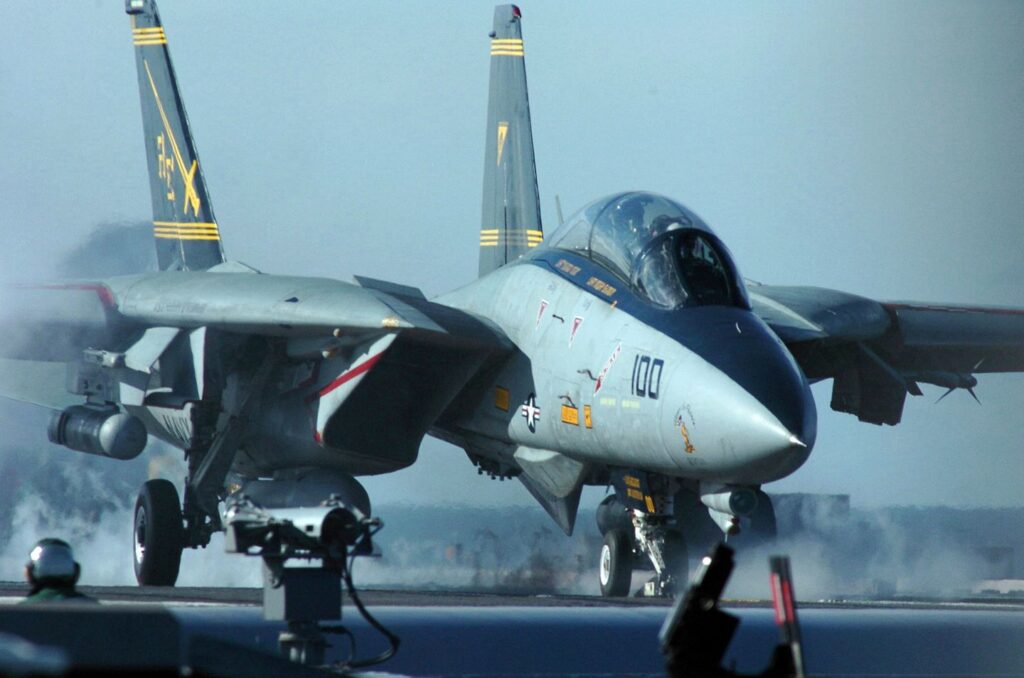
Later, new versions of the F-15 (including with anti-satellite capability), such as the STRIKE EAGLE (F-15 E), and the F-14C (repowered), and later the F-14D Super Tomcat were developed, pending the entry into operation of the new F-22 fighter (winner of the competition with the F-23), which, like the F-117 (attack aircraft), the B-2 (a $2 billion strategic bomber, which is why only 20 aircraft were ordered) and the Aurora (a replacement for the SR-71 for high-speed strategic reconnaissance with performance above Mach 5. 0 and high altitude), also employed stealth technology, and were classified as 5th generation.
The idea was to deploy in the force an even superior aircraft to continue the true reign established with the Eagle/Tomcat duo for over 20 years. It is worth reaffirming that the introduction of the F-14 and F-15 fighter planes in the US armed forces represented a true milestone and a definitive turn towards the theses developed in the 1960s, which defended, in the light of the various accumulated experiences (including Vietnam), a quantitatively smaller air force, but one equipped with complementary high-tech aircraft, that is, the F-15 Eagle/F-16 Falcon duo in the USAF and the F-14 Tomcat/F-18 Hornet duo in the embarked Navy.
MAIN TACTICAL AIRCRAFT AVAILABLE BY ARMED FORCE (1994)
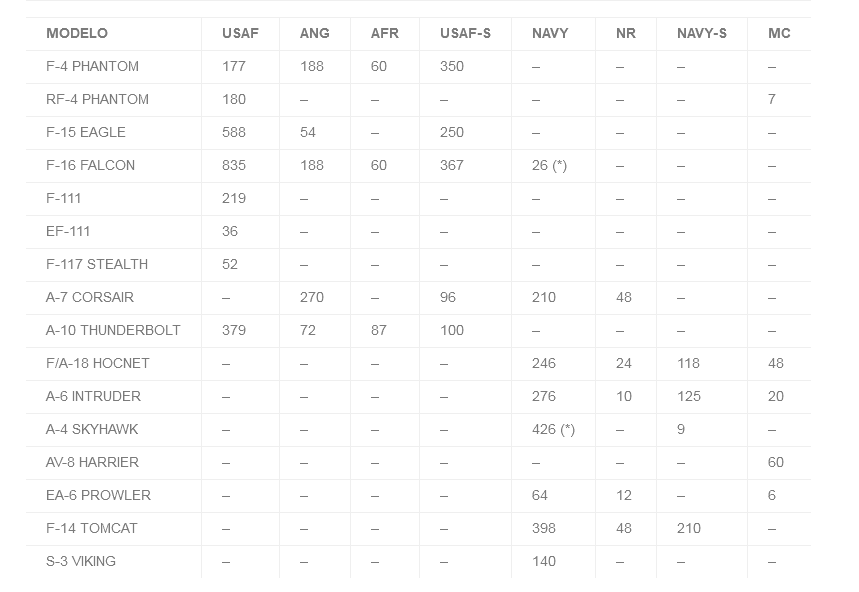
The successful employment of this new air force concept was first recorded in 1972 during the second North Vietnamese offensive against South Vietnam, and proved the USAF right in employing this new concept, which was fully confirmed with the extraordinary performance of the US armed forces in the Gulf War in 1991.
A new conceptual dimension of Air Superiority seems, therefore, effectively consolidated in the U.S. military mindset, and for the coming years, a new air force is expected to be equipped with an even smaller number of high-performance aircraft in order to ensure the continued primacy of the United States as the greatest military power on the planet.
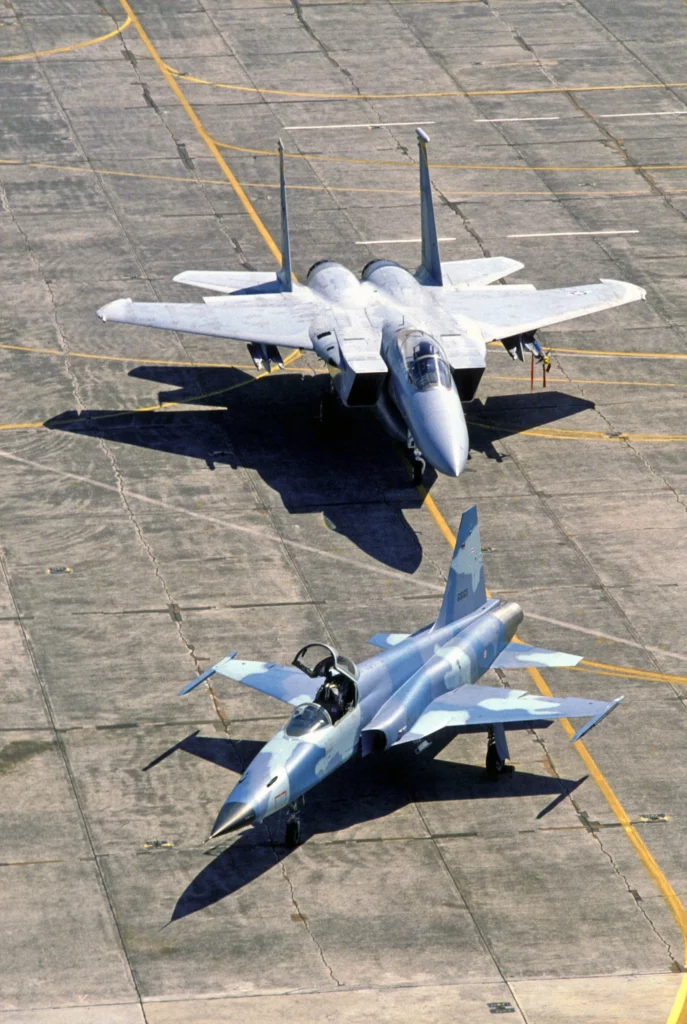
Reis Friede – Professor Emeritus of the Army Staff and Command School (ECEME), Professor Honoris Causa of the Air Force Staff and Command School (ECEMAR), Professor Emeritus of the Army Officers Improvement School (EsAO), and Special Lecturer at the Superior War College (ESG). Cavok Brasil
*** Translated with by the DEFCONPress FYI Team ***
